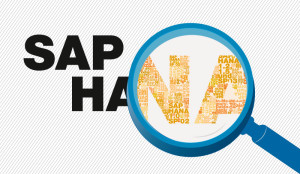 SAP plans to increase its total revenue to at least €22 billion (US$30 billion), with revenue from its cloud business expected to grow up to €3.5 billion by 2017.
SAP plans to increase its total revenue to at least €22 billion (US$30 billion), with revenue from its cloud business expected to grow up to €3.5 billion by 2017.
The business software maker reported Tuesday that total revenue for 2013 was €16.8 billion, up 4 percent from the previous year, with revenue from its HANA in-memory database up 69 percent at constant currencies to €664 million, from its 3,000 HANA customers.
The company said the fast growing cloud business and anticipated growth in support revenue will deliver more predictable, recurring revenue as it moves towards 2017. SAP, however, expects its goal for 2015 of non-IFRS (International Financial Reporting Standards) operating margin of 35 percent to be now delayed to 2017 as it spends on taking advantage of growth opportunities in the cloud market.
For the fourth quarter, SAP’s revenue was €5.1 billion, up 2 percent from the same quarter last year, while net profit grew 20 percent to €1.3 billion under IFRS. The company saw a 2 percent drop in software revenue to about €1.9 billion, but cloud subscriptions and support revenue grew at a scorching 66 percent to €209 million, indicating a gradual shift in the company’s revenue mix.
Software and software related service revenue grew 4 percent in the quarter to close to €4.4 billion.
SAP’s cloud subscription and support revenue that is contracted but not yet invoiced and shown in deferred revenue, known as cloud subscription and support backlog, increased by 50 percent year-on-year to about €1.2 billion at the end of the fourth quarter.
Non-IFRS “deferred cloud subscription and support revenue” was €447 million at the end of the quarter, a year-over-year increase of 25 percent, the company said. Deferred cloud subscription and support revenue includes committed future cloud subscription and support revenue already paid by the customer for subsequent quarters of the year.
The Walldorf, Germany, company continued with double-digit growth in non-IFRS software and cloud subscription revenue in the Asia Pacific and Japan region in constant currencies in the quarter, driven by demand in China. In the Americas region, it saw single-digit growth in non-IFRS software and cloud subscription revenue at constant currencies, partly because of the transition by customers to the cloud.
In the EMEA region, SAP saw high, single-digit growth of 9 percent in non-IFRS software and cloud subscription revenue at constant currencies, driven by double-digit growth in cloud subscription and support revenue in the region and double-digit software revenue growth at constant currencies in Germany, France, Russia, Middle East and Africa.
SAP has forecast for this year non-IFRS cloud subscription and support revenue of up to €1 billion at constant currencies. It expects 2014 non-IFRS software and software-related service revenue to increase by 6 to 8 percent at constant currencies from €14 billion in 2013, and non-IFRS operating profit to be in a range of €5.8 billion to €6.0 billion at constant currencies from €5.51 billion last year.
The company still aims to increase its total revenue to at least €20 billion and revenue from its cloud business, including cloud-related professional services, to approximately €2 billion by 2015. It announced the revenue target in 2012, when it said it would exceed €20 billion by 2015.
In 2013, software and cloud subscription revenue was €5.2 billion for the full year, up by 6 percent from the previous year, while support revenue was €8.7 billion, which also increased by 6 percent. Net profit at €3.3 billion increased 18 percent year-on-year. The number of employees was 66,572 FTEs, an annual rise of 3 percent.
Cloud software, along with mobility and in-memory computing, was part of a new strategy SAP co-CEOs Jim Hagemann Snabe and Bill McDermott began in 2010, Snabe said. “Today, almost exactly four years later, we are celebrating the fourth year of double-digit growth,” he said.
Snabe is planning to step down this year, leaving McDermott as SAP’s sole CEO and the first American to hold the position at the company.
SAP has built up its cloud business through major acquisitions of companies such as SuccessFactors and Ariba, versus pure organic growth. Oracle has pursued a similar strategy.
“We have proven it is possible to add a significant cloud business while at the same time growing our core and expanding our margins,” Snabe said.
By the “core,” Snabe referred to SAP’s vast installed base of customers running its Business Suite ERP (enterprise resource planning) software on-premises. While SAP recently launched a HANA-based hosting service for the Suite, it’s also hoping to get customers now using Oracle and other rival databases on-premises to switch to HANA.
Some 800 customers have purchased the Suite on HANA option, which was released in May 2013, according to Tuesday’s announcement. That’s twice as many as SAP expected to have so far, Snabe said. “We are ready to reinvent the installed base.”
Ultimately, all of SAP’s products will run on HANA, McDermott said. “HANA is now a serious brand that we’re not having to push as hard as we used to.”
SAP also plans to a take a “mobile-first” approach to every application it builds, he added.
Customers can expect a different approach from SAP’s sales force this year, according to McDermott.
“We want the sales force leading with the cloud,” he said. “I bet that will be a big surprise to the California companies,” he added in an apparent reference to Oracle and Salesforce.com.





